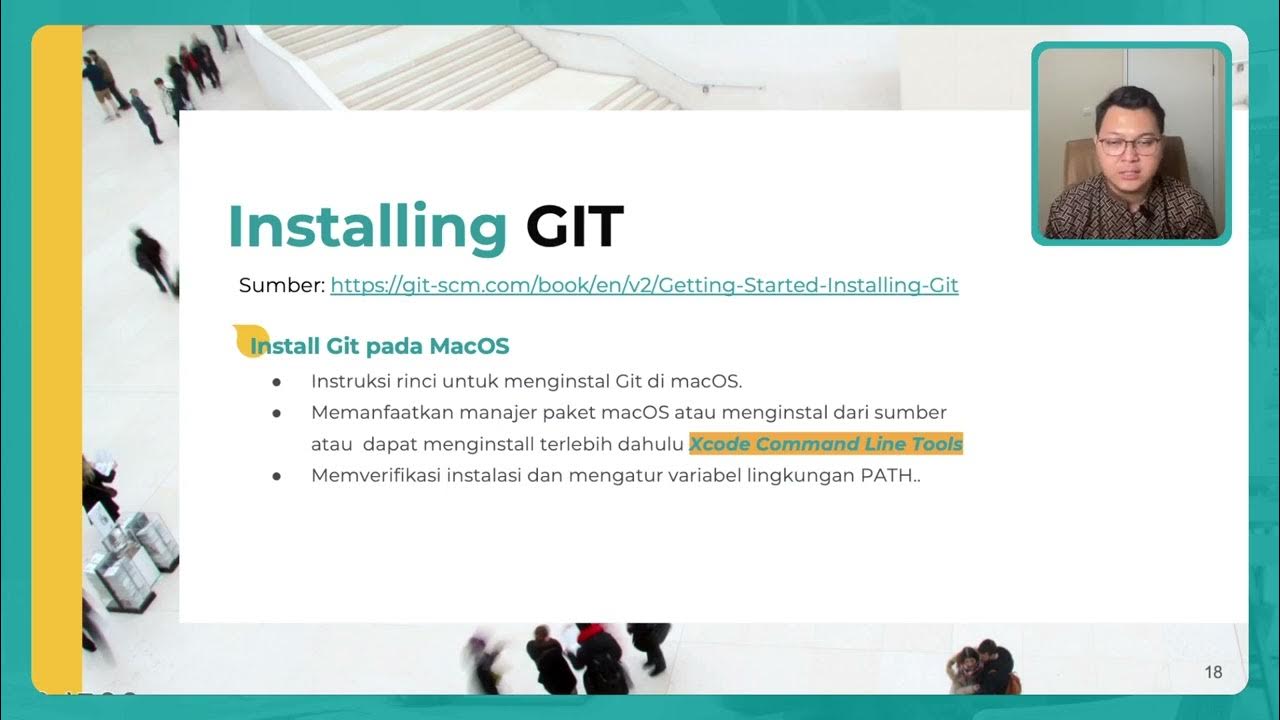The Power of Git and Github
Summary
TLDRIn this video, Chris from Codecademy explores the power of Git and GitHub, key tools for version control and collaboration in software development. The video explains how Git tracks and manages changes to files, allowing multiple developers to work on a project without interfering with each other’s work. It covers essential Git features like branching, committing, and creating pull requests, and introduces GitHub as a platform to host Git repositories, making collaboration even easier. Through a hands-on example, viewers learn how to clone a project, create branches, commit changes, and submit pull requests for code review.
Takeaways
- 😀 Git is a version control system that helps manage and track changes to files over time.
- 😀 Git is essential for collaborative software development, allowing multiple developers to work on the same project without conflicts.
- 😀 A Git repository contains the project files along with their version history, allowing easy tracking of changes.
- 😀 Branching in Git allows developers to create separate versions of the project, helping to isolate new features or modifications.
- 😀 A pull request in GitHub enables developers to propose changes to a project, discuss them, and get approval before merging into the main project.
- 😀 GitHub provides a web-based interface for Git repositories, making collaboration and project management easier for developers.
- 😀 Using Git and GitHub together gives access to advanced collaboration features like code reviews, issue tracking, and automated testing.
- 😀 It's important to avoid making changes directly to the main branch of a project to prevent potential conflicts with other team members' work.
- 😀 After making changes in a branch, developers can commit their changes locally and then push the branch to GitHub for review and integration.
- 😀 GitHub allows you to create and manage pull requests, assign reviewers, and discuss changes before merging them into the project.
- 😀 In large projects with multiple branches, GitHub's pull request and branch management features help coordinate work and streamline integration.
Q & A
What is Git and what purpose does it serve?
-Git is a version control system that allows you to track and manage changes to files. It is primarily used by developers to collaborate on software projects, ensuring that changes to the files are well-organized and managed over time.
How does Git help in collaborative work on software projects?
-Git helps by managing different versions of a project’s files. It allows multiple developers to work on separate branches, keeping the main project intact while working on features or modifications. This enables efficient collaboration without overwriting each other’s work.
What is the concept of branching in Git?
-Branching in Git allows developers to create a separate workspace where they can work on new features or modifications without affecting the main project. Changes are made in the branch and can be merged back into the main project once reviewed and approved.
What is the role of a pull request in GitHub?
-A pull request is used when a developer wants to propose changes from their branch to the main branch. It facilitates a review process where other team members can discuss, suggest changes, and approve the modifications before they are merged.
How does GitHub enhance the functionality of Git?
-GitHub is a cloud-based platform that hosts Git repositories, providing a web interface for easier navigation and collaboration. It includes features like pull requests, code review, issue tracking, and integration with other tools, enhancing the Git workflow.
What steps are involved in cloning a repository from GitHub to your local machine?
-To clone a repository, first navigate to the GitHub project page and copy the cloning link. Then, in your terminal or Git Bash, use the 'git clone' command followed by the link. This will create a local copy of the repository on your system.
What is the importance of creating a new branch before making changes to a repository?
-Creating a new branch allows you to make changes in isolation without affecting the main project. This ensures that the main branch remains stable, and you can experiment or work on features safely before merging them back.
How do you commit and push changes to a remote GitHub repository?
-After making changes in your local branch, use 'git add' to stage the changes, 'git commit' to save them with a description, and then use 'git push' to send the changes to the remote repository. A new branch can be pushed with 'git push --set-upstream origin <branch_name>'.
What is the process for creating a pull request on GitHub?
-To create a pull request on GitHub, go to the repository's 'Pull Request' tab, select your branch, and provide a description of the changes you made. You can assign reviewers, add labels, and then create the pull request for review and merging.
How does GitHub support automation in projects?
-GitHub supports automation through GitHub Actions, which allows users to set up workflows that trigger automated tasks when specific events occur, such as pushing changes or creating pull requests. This can streamline development tasks like testing and deployment.
Outlines

This section is available to paid users only. Please upgrade to access this part.
Upgrade NowMindmap

This section is available to paid users only. Please upgrade to access this part.
Upgrade NowKeywords

This section is available to paid users only. Please upgrade to access this part.
Upgrade NowHighlights

This section is available to paid users only. Please upgrade to access this part.
Upgrade NowTranscripts

This section is available to paid users only. Please upgrade to access this part.
Upgrade NowBrowse More Related Video

Git Tutorial for Beginners: Complete GitHub Guide with Version Control Commands 2025

【Git入門講座 合併版】この動画1本でGitとGitHubの基礎をゼロからマスター!【初心者向け】

Sub Topic 2

Git Mastery Crash Course | From First Commit to Big Tech Workflows

20 Years Of Programming | Prime Reacts

Top 20 DevOps Tools You Need to Know | DevOps Tools Tutorial | Edureka
5.0 / 5 (0 votes)